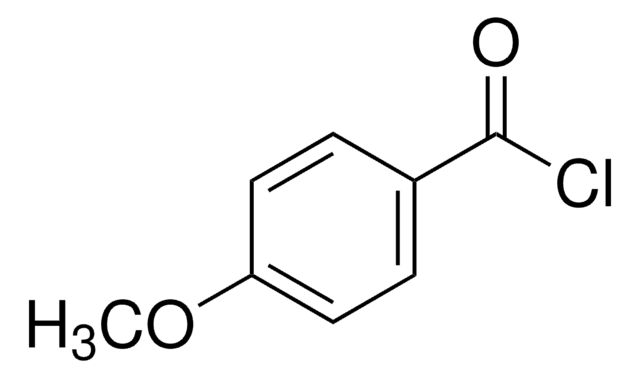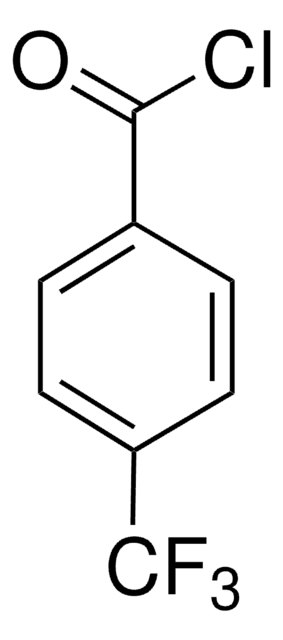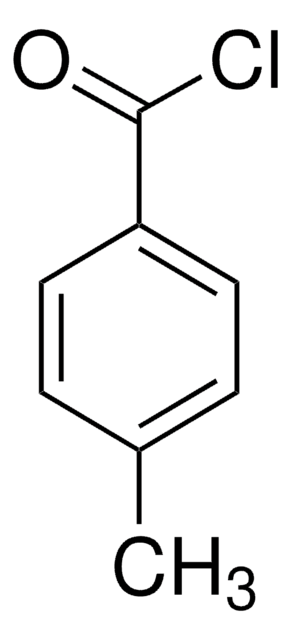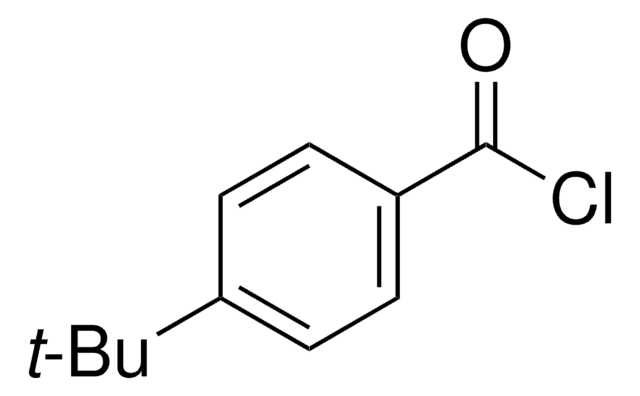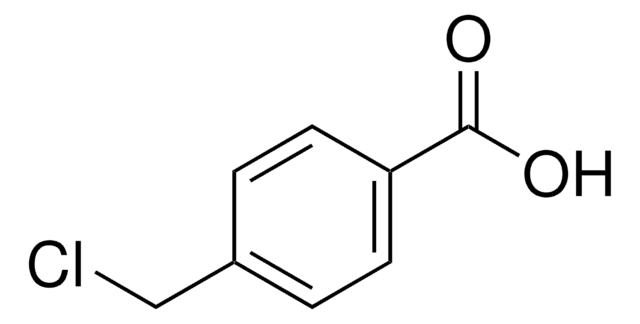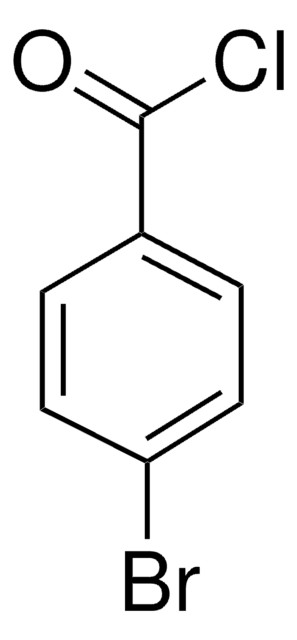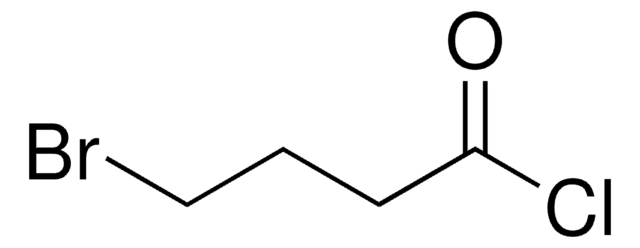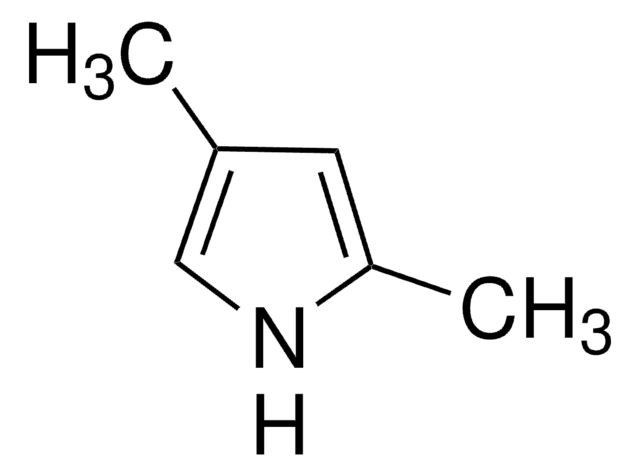270784
4-(Chloromethyl)benzoyl chloride
97%
Autenticatiper visualizzare i prezzi riservati alla tua organizzazione & contrattuali
About This Item
Formula condensata:
ClCH2C6H4COCl
Numero CAS:
Peso molecolare:
189.04
Numero CE:
Numero MDL:
Codice UNSPSC:
12352100
ID PubChem:
NACRES:
NA.22
Prodotti consigliati
Livello qualitativo
Saggio
97%
P. eboll.
126-128 °C/6 mmHg (lit.)
Punto di fusione
30-32 °C (lit.)
Gruppo funzionale
acyl chloride
chloro
Stringa SMILE
ClCc1ccc(cc1)C(Cl)=O
InChI
1S/C8H6Cl2O/c9-5-6-1-3-7(4-2-6)8(10)11/h1-4H,5H2
RCOVTJVRTZGSBP-UHFFFAOYSA-N
Categorie correlate
Applicazioni
4-(Chloromethyl)benzoyl chloride was used as an atom transfer radical polymerization (ATRP) initiator in the growth of polyacrylamide (PAAm) brushes from silicon wafers. It was also used as a building block in a microwave-assisted, solid-phase synthesis of imatinib, an anticancer agent.
Avvertenze
Danger
Indicazioni di pericolo
Classi di pericolo
Eye Dam. 1 - Skin Corr. 1B - STOT SE 3
Organi bersaglio
Respiratory system
Codice della classe di stoccaggio
8A - Combustible corrosive hazardous materials
Classe di pericolosità dell'acqua (WGK)
WGK 3
Punto d’infiammabilità (°F)
199.4 °F - closed cup
Punto d’infiammabilità (°C)
93 °C - closed cup
Dispositivi di protezione individuale
Faceshields, Gloves, Goggles, type ABEK (EN14387) respirator filter
Scegli una delle versioni più recenti:
Possiedi già questo prodotto?
I documenti relativi ai prodotti acquistati recentemente sono disponibili nell’Archivio dei documenti.
I clienti hanno visto anche
Irina Cringus-Fundeanu et al.
Langmuir : the ACS journal of surfaces and colloids, 23(9), 5120-5126 (2007-03-29)
A method is presented to prevent microbial adhesion to solid surfaces exploiting the unique properties of polymer brushes. Polyacrylamide (PAAm) brushes were grown from silicon wafers by atom transfer radical polymerization (ATRP) using a three-step reaction procedure consisting of immobilization
Tetrahedron Letters, 48, 3455-3455 (2007)
Song Yi Lee et al.
ACS applied materials & interfaces, 10(43), 36628-36640 (2018-10-10)
CD44 receptor targeting and lipid rafts destroying nanoassembly (NA) was developed for breast cancer therapy. Methyl-β-cyclodextrin (MbCD), as a cholesterol depletion moiety, was conjugated to hyaluronic acid-ceramide (HACE) structure via an ester linkage. HACE-MbCD NA with 198 nm hydrodynamic size
Ali Bilgic et al.
Journal of fluorescence, 30(4), 867-881 (2020-06-05)
In this study, we developed two different very sensitive magnetite fluorescent Fe3O4@SiO2-TPED-BODIPY and Fe3O4@SiO2-TMPTA-BODIPY nano-sensors for the selective detection of Cr(VI) ions. The Cr(VI) metal ions sensing is based on the fluorescent quenching of BODIPY functionalized with Fe3O4@SiO2-TPED and Fe3O4@SiO2-TMPTA
Andrej Babič et al.
Chemistry (Weinheim an der Bergstrasse, Germany), 24(6), 1348-1357 (2017-11-10)
Gadolinium-loaded nanomicelles show promise as future magnetic resonance imaging (MRI) contrast agents (CAs). Their increased size and high gadolinium (Gd) loading gives them an edge in proton relaxivity over smaller molecular Gd-complexes. Their size and stealth properties are fundamental for
Il team dei nostri ricercatori vanta grande esperienza in tutte le aree della ricerca quali Life Science, scienza dei materiali, sintesi chimica, cromatografia, discipline analitiche, ecc..
Contatta l'Assistenza Tecnica.